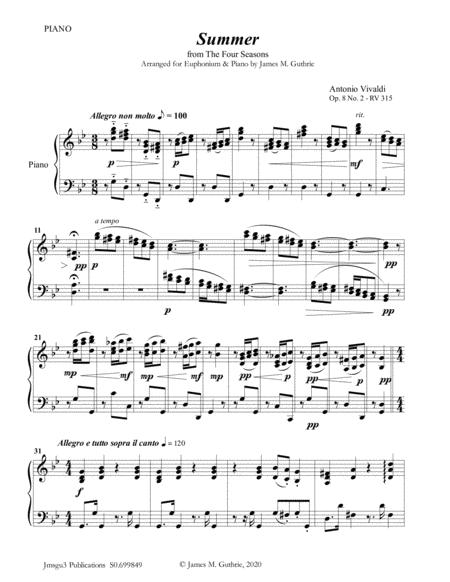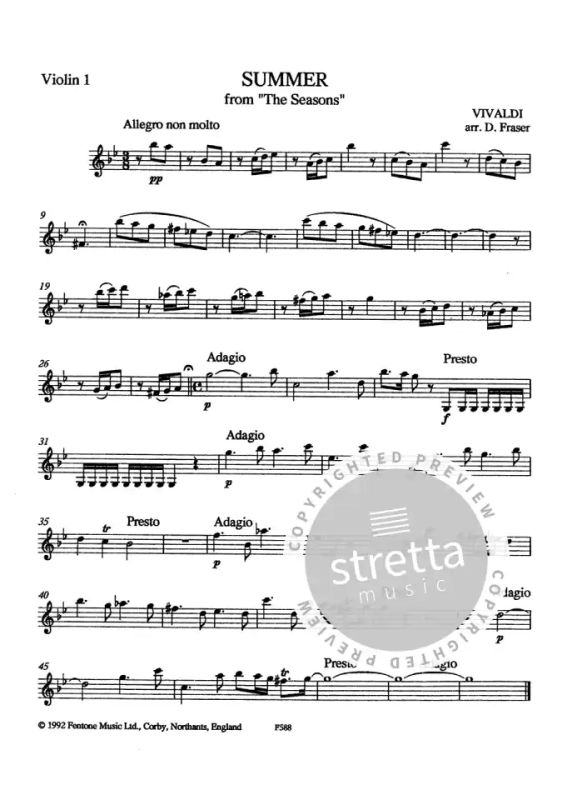
In the United States, copyright can only apply to new creative work, and the re-engraving of a public domain piece (not including new additions of creative material) should not qualify for a new copyright, despite copyright claims (which properly would only apply to new material). In most European Union countries, these editions (except new original material) are generally protected for no more than 25 years from publication (30 years in Poland). In Canada, new editions/re-engravings of public domain works (when not including new original material) should be in the public domain due to failing to meet the threshold of originality. Any commentary or critical apparatus, if protected by copyright, should not be included in the scan(s) available here. But the same music, when recalled in G minor from bar 155, functions as a substitute ritornello in this special example of progressive ritornello form’: what might have been merely a transient, inconsequential feature of the weather proves to be a lasting and ultimately damaging one.This is an urtext/critical/scholarly/scientific edition (or a simple re-engraving). Although it is tutti, the subsequent battle of winds (from bar 90) continues the episode, prior to the ritornello at bar 110.

The irony is clear: breezes that in other circumstances bring welcome refreshment are the harbinger of destruction.

The descent to D minor occurs over eight innocent-sounding bars (each bar represented by one crotchet) – in a fateful melodic contour(y) that relates back to the ritornello and forward, as we shall see, to the man’s utter distress. Modulation, long-delayed, happens only when the ‘sweet zephyrs’ disturb the stillness. Fixed in G minor and recalling the four-note motif (bass, bars 63-6), they intensify – even to deafening proportions (bars 49-52) – the man’s awareness of danger. The cuckoo’s voice, itself a premonition of disaster, and the other bird-songs do nothing to relieve the uncomfortable sense of expectancy. Here Vivaldi introduces wilting figures that will remain significant: falling quavers, often with the jarring sound of the augmented second, and, embedded in the cadential element, the four-note descent transformed by Neapolitan-sixth harmony. First we hear a ritornello that is anything but typical: a set of disarmingly ‘slow’ gestures, metrically dislocated, that must represent the lethargy of the anxious man at least as much as the oppressive heat of an airless day. Many of the first movement’s peculiarities deserve attention. The finale’s unprecedented representation of destructive power is made all the more effective by what precedes it: an immense tightening of tension throughout the first movement that the weary lyricism of the slow movement cannot dissipate. Haydn’s use of it, for the opening bars of ‘The Seasons’ (1801), is particularly close to Vivaldi’s: played harshly in G minor, it conveys Winter’s undiminished threat with similar menace. Descent through the tetrachord in a minor key is a melodic feature common to many composers’ works – frequently those concerning suffering. With perfect logic, it also characterizes the winds that threaten to bring the storm. Vivaldi’s four-note leitmotif not only makes the connection between the violence of the storm and, in diminution, its cutting effects (solo part, bars 41-8 and 109-13). Of all the Seasons, only Summer has a relentless progression across its three movements from anticipation to realization of a single event, and this is reflected in the fast movements’ unusually high degree of motivic integration. Vivaldi’s vision of the fear and destruction associated with a temporale – a violent storm, brewed by the warm winds from the Sahara, of a kind that regularly afflicts Italy in summer – is arguably his most inspired characterized concerto.


 0 kommentar(er)
0 kommentar(er)
